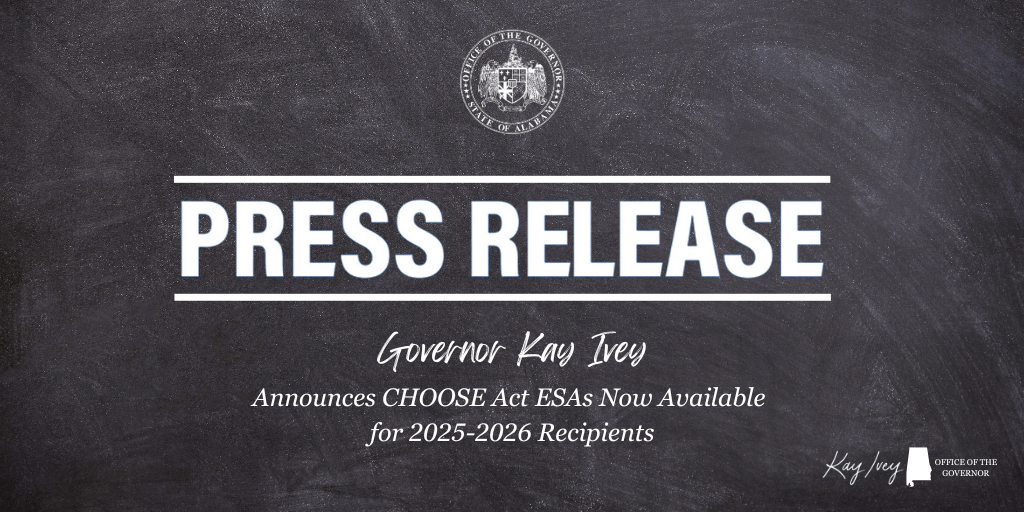BIRMINGHAM, Ala. – State House education budget leaders moved last week to put an additional $35 million toward the state’s new school choice tuition program, citing the nearly 37,000 students applying for Alabama’s new education savings accounts.
Officials had originally proposed $100 million in funding for the program’s initial 2025-2026 school year.
“We were a little surprised by the overwhelming, large applicant numbers that were reported,” Senate Education Budget Chair Arthur Orr, R-Decatur, told Alabama Daily News.
In response, Orr and House Education Budget Chair Danny Garrett, R-Trussville, added a $35 million “placeholder” to the proposed fiscal year 2026 education budget, in case more funding is needed to meet demand.
“It seems clear that there’s been higher than anticipated interest in this first year of the program, and we want to be responsive to that as best we can,” Garrett said.
The new allocation appears in the final section of Senate Bill 112, which Orr’s committee amended to direct an expected supplemental appropriation to the CHOOSE Act for the 2025-26 school year.
The Senate approved the education budget as part of a record $12.1 billion education package Thursday. The House will begin work on the bills next week.
Garrett said the money should be available because tax collections for the 2025 tax year are projected to exceed current budget estimates.
“We do believe that we should have some money…reversions and things like that, that impact that number,” he said.
Said Orr: “We feel confident about the supplemental appropriation, and we want to be able to support families that want to go down this path, making sure that the program is fully funded.”
Exactly how many of the 37,000 applicants qualify – and for which type of ESA – remains unclear. Families could apply for either a $2,000 ESA to homeschool or a $7,000 ESA to pay public out-of-district or private school tuition. Orr said those details should become clearer as the Alabama Department of Revenue processes the applications.
Families had from Jan. 2 through April 7 to apply. Under the CHOOSE Act, the amount of the ESA depends on where the student will be educated.
The chart below shows the current educational status of students that applied for an ESA through the CHOOSE Act before the Apr. 7 deadline. Click here if you’re unable to see the chart.
For now, eligibility is limited to families with adjusted gross incomes below 300% of the federal poverty level. According to ALDOR, about 75% of Alabama families meet those guidelines. Here’s the income cap by family size:
- 2 people: $63,450,
- 3 people: $79,950
- 4 people: $96,450
- 5 people: $112,950
- 6 people: $129,450
Starting in the 2027–28 school year, those income limits will be lifted, opening eligibility to all qualifying students regardless of household income.
“I’ve been warning my colleagues that when it opens up in year three, that’s when I would really predict a strong uptick,” Orr said.
While some have voiced concern that the program will primarily benefit private schools, Garrett emphasized that lawmakers are also increasing investments in public education.
“While we’re [funding ESAs] on one side, on the other hand, we’re creating a new school funding model that’s going to put more than that amount of money into student needs in the public schools,” Garrett said.
He was referring to the RAISE Act, which allocates $375 million to public schools over the next three years and distributes funding based on student needs.
About 15% of Alabama’s school-aged children currently attend private school. Garrett said the volume of applications shows interest across education sectors.
“We’ve heard from our citizens and there appears to be a lot of interest,” Garrett said. “We want to sort through all the details, but we want to be responsive to that.”
Orr agreed. “We believed it was important that, for eligible families in this first year out of the gate, that we try to do all we can to make sure that their educational choices were respected, and we tried to do all we could to accommodate.”
The map below shows the number of applicants by county. Some applicants, listed below the map by county, came from out of state. ALDOR officials said those are likely military families who will move to Alabama before school starts in August. Click here if you are unable to see the map.




